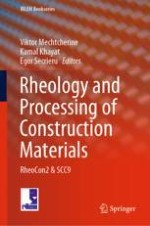2020 | OriginalPaper | Buchkapitel
Interaction of Superplasticizers with Cement from the Point of View of Colloid Chemistry
verfasst von : Johann Plank, Manuel Ilg
Erschienen in: Rheology and Processing of Construction Materials
Aktivieren Sie unsere intelligente Suche, um passende Fachinhalte oder Patente zu finden.
Wählen Sie Textabschnitte aus um mit Künstlicher Intelligenz passenden Patente zu finden. powered by
Markieren Sie Textabschnitte, um KI-gestützt weitere passende Inhalte zu finden. powered by
